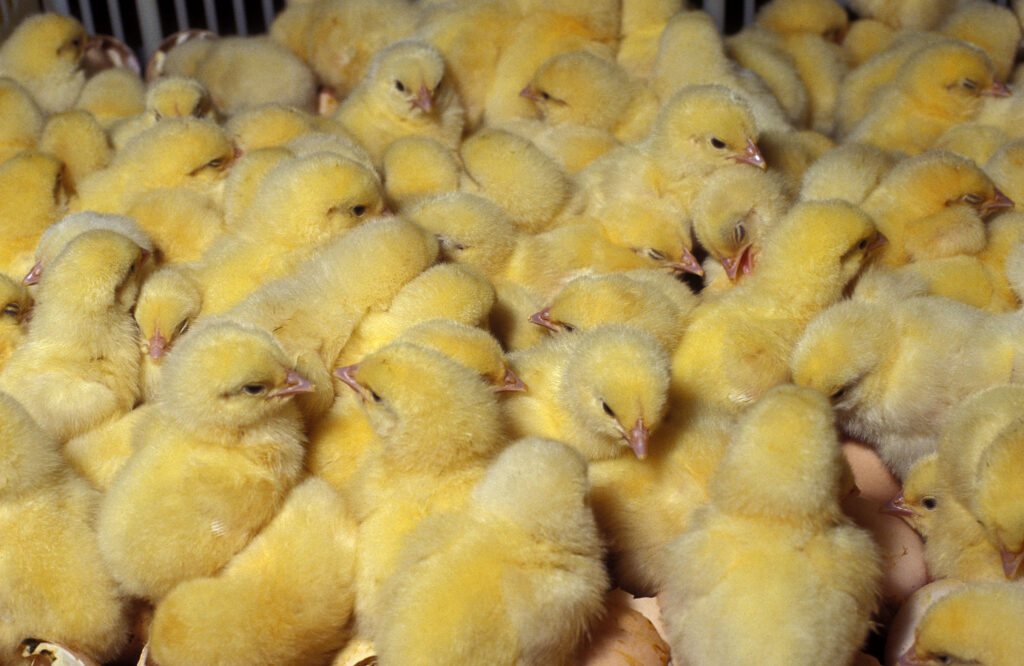Remember, good egg layers begin with proper care when they are chicks. There is a real advantage of raising your own chicks, you control their diet, medication and everyday care. Be careful buying grown chickens from different places. Ask questions about their diet and vaccinations before you buy them.
Supplies needed:
1. A chick brooder (or place to keep your chicks.) This could be as simple as a cardboard box. Make sure there is room inside for the chicks to run around and play. You also need enough space to have a small feeder and water container.
2. A heat lamp and 2 bulbs. Have an extra bulb in case one goes out. You don’t want your chicks getting cold in the middle of the night if they do not have a heat source. Make sure you get the bulbs that are 125 -250 W. You need your little chicks to stay warm at 95-100 degrees when they first hatch. A regular light bulb will NOT keep them warm enough! Purchase the RED heat bulbs, it helps the chicks sleep at night because it is not so bright. It also helps them not peck each other.
3. A thermometer! Keep a thermometer inside the chick brooder so you can control how cold or warm it is. The thermometer should be 1″ from the bottom of the brooder to know how warm it is by the floor. Lower or raise your heat lamp until the temperature is 95 degrees. Lower temperature 3-5 degrees every week until they are use to 75 degrees. If you see your chicks standing with their wings spread out they might be too warm. If they are all clumped together they might be too cold and could step on each other which could result in death from smothering. Keeping the proper temperature will help your chicks get off to a good start.
4. Feeder and water container. There are a couple different kinds in your local ranch stores.. The red plastic ones will fit on a mason jar. Tip an old pie plate over and place your water feeder on top to keep the chicks from stepping in the water.
5. Chick Start feed. If your chicks are vaccinated for coccidiosis, you do not need to feed them medicated feed. Ask to see if your chicks have been vaccinated before you purchase them. If you are able to order them with the option to vaccinate, pay a couple extra shillings to do so. If your chicks have not been vaccinated, give them medicated feed until they are 6-8 weeks old.
6. Pine shavings or Cedar shavings (with no additives) to keep chicks warm and dry. Be sure to keep the brooder clean. If anything gets wet, replace brooder with new shavings.
7. Food Grade Diatomaceous Earth to keep lice and mites off! Early signs of poultry head lice is the chick stretching out its neck and falling on its back. Check and dust once a month for lice on chicks. Put a little DE in your fingers and rub through the neck and around head.

